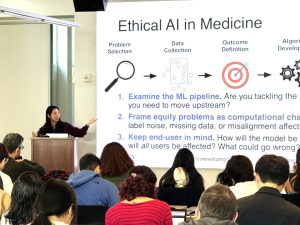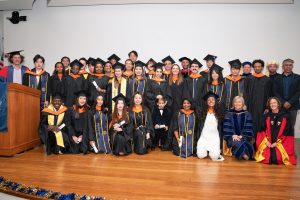UC Berkeley is traveling back in time. The campus is on track to reduce its carbon footprint to 1990 levels in two years, with the long-term goal of achieving carbon neutrality. The drive to accomplish this began in 2005 when a group of graduates, undergraduates and faculty members drafted a letter to the administration seeking to place a cap on campus carbon emissions. The administration replied with a challenge: to put together a practical, measurable feasibility plan.
The result was CalCAP, UC Berkeley’s Climate Action Partnership, a student-led initiative that took up the daunting task of calculating all of the University’s emissions and drafting recommendations to the administration.

“No university at the time had tried to inventory what it’s carbon emission was at that point,” explained Scott Zimmerman, a graduate of Boalt Law School who helped develop CalCAP during his time as a graduate student. “It just made sense that we would try to tap into what is going on in the labs and use the campus as a testing bed for those ideas.”
After taking first prize at the first Big Ideas@Berkeley contest, CalCAP gathered a group of eight students to comprehensively measure the campus’ carbon footprint. Considering everything from faculty and staff commutes, fugitive emissions of refrigeration, and even student’s air travel, the resulting feasibility study of 2007 convinced the administration to accept CalCAP’s proposed targets.
Former CalCAP project manager, Fahmida Ahmed believes the group’s success is due to the genuine passion of the students involved. For students, it was very personal.
“It was important for it to be home-grown,” noted Fahmida, who now works as the Associate Director of Stanford’s Office of Sustainability, “We wanted our institution as a whole to look within and understand where we are and where we want to go from there.”
Seeded from a modest award from Big Ideas, CalCAP has grown immensely. The organization has gone on to inspire other UC campuses to adopt similar emission targets. Yet even with the added responsibilities, students have continued to play an active role in the initiative. Every year, graduate students enrolled in the Sustainability in Action: CalCAP course conduct extensive greenhouse gas emission inventories in order to evaluate the campus’ progress toward its sustainability goals. The latest study found that the UC Berkeley campus is currently exceeding the 2014 target by 42,000 metric tons of carbon emissions.
In addition to policy suggestions, like the switch from coal to natural gas power, CalCAP is actively engaged in developing sustainable habits in the everyday lives of students. On their website, an interactive feature allows students to calculate the carbon impact of their air travel. Moreover, the just-released MyEnergy at Berkeley dashboard, a collaboration between numerous campus organizations, allows students to track energy consumption in 57 buildings on campus day by day, constantly reminding students of the environmental impact.
Environmental initiatives often struggle to garner support for goals that are marginal and difficult to see. But CalCAP’s interdisciplinary approach that strives to consider all stakeholders has ensured widespread support of its carefully chosen reduction targets. While the research of accomplished scientists on campus provides the resources for environmental progress, CalCAP shows that it often takes the drive and passion of students to push for measurable reform.





